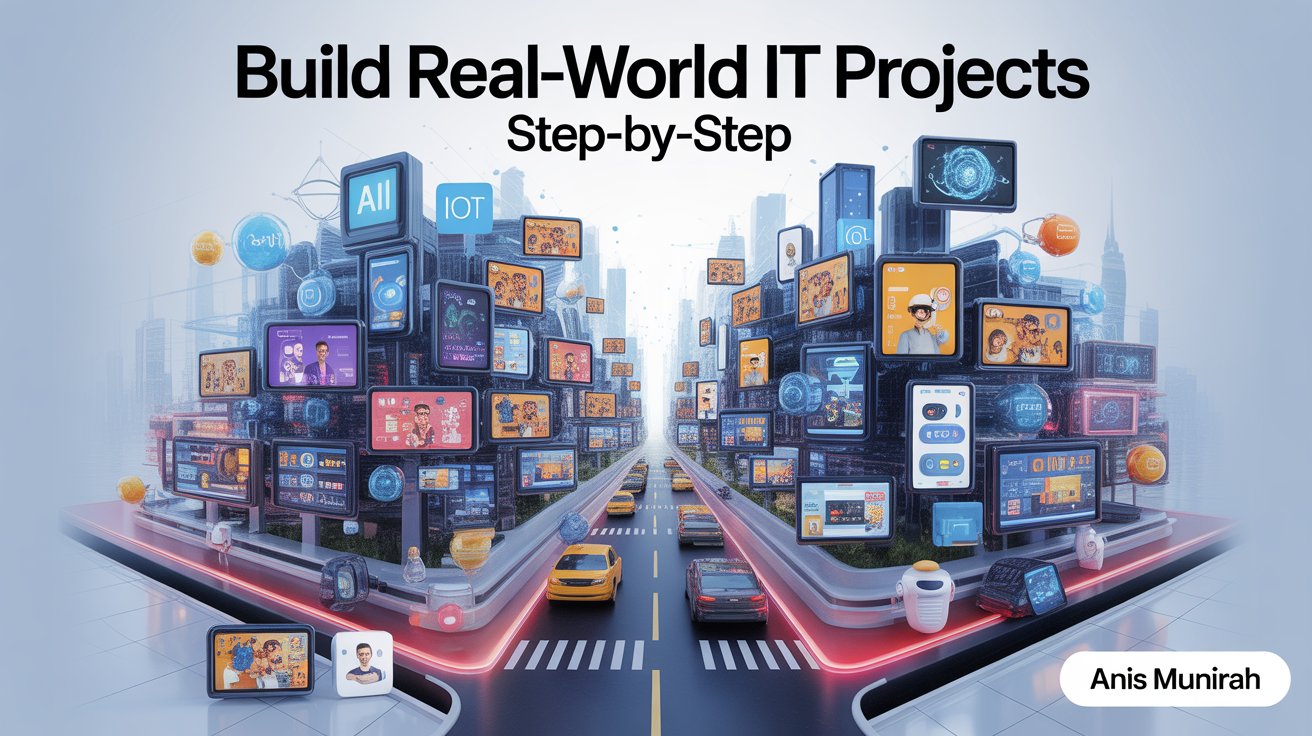
What is IoT? Key Concepts and Components
Topic 1: What is IoT? Key Concepts and Components
Let’s imagine a day in the life of Sarah, a factory supervisor. Every morning, Sarah checks her phone before leaving for work—not just for emails, but also to see the latest updates from her production floor. Why? Because every machine, light, and even the main gate in her factory is connected to the internet through devices called IoT devices.
IoT—The Power to Connect the Unconnected
The Internet of Things, or IoT, is about connecting everyday devices—such as sensors, lights, machines, or even the coffee maker—to the internet. This allows them to send, receive, and process information. Imagine the factory: If a conveyor belt gets too hot, a sensor notices the temperature change. Instantly, it sends the data to the cloud, where a program analyzes it. Before Sarah even notices the issue, she gets a notification on her smartphone, and the machine is automatically turned off to prevent accidents.
Key Components of IoT
Sensors or Devices
These are like the “nerves” of the IoT system. They sense physical changes—temperature, movement, light, or pressure—and collect important data. In our story, the temperature sensor on the conveyor belt is an example.Connectivity
How do these sensors talk to each other and the rest of the world? Through connections such as Wi-Fi, Bluetooth, or even cellular networks. The sensor connects to a central hub or the internet, just like your phone does.Data Processing
Once the data is collected, it needs to be processed. This could happen locally in a device, or more powerfully in the cloud. Processing answers questions like: Is the belt really too hot, or is it just a short spike?User Interface
This is how Sarah and her team interact with the IoT system. A notification, an app dashboard, or even an automatic alarm allows users to understand and react to what’s happening.
Real-Life Example
Think about a smart home: The lights, fans, security cameras, and even the door locks are connected to the internet. You can control all of them from your smartphone—whether you’re at home or halfway across the world. In an industrial setting, this means safer, smarter, and more efficient factories.
2. Setting Up Your First IoT Device (e.g., Arduino/Raspberry Pi)
Choose Your Device: Starter kits like Arduino or Raspberry Pi make it easy to begin.
Connect the Basics: Plug in sensors (e.g., temperature, motion) and connect to your computer.
Install Software: Use simple coding platforms like Arduino IDE or Raspbian OS for Raspberry Pi.
Test Your Device: Run a basic program (like blinking an LED or reading temperature).
3. Collecting Data from Sensors
Attach Sensors: Connect sensors (e.g., temperature, humidity) to your microcontroller.
Code to Collect: Write a simple code to read data from the sensor.
Monitor Output: Check the data in real-time using a serial monitor or display.
4. Sending Data to the Cloud
Choose a Cloud Service: Popular options include Thingspeak, Blynk, or Google Cloud.
Setup Internet Connection: Connect your device to Wi-Fi (using modules like ESP8266).
Send Data: Modify your code to upload sensor readings to the cloud platform.
View Data Remotely: Access your dashboard from anywhere with internet.
5. Real-World IoT Applications
Smart Homes: Automated lighting, climate control, and security.
Health Monitoring: Wearables that track heart rate or physical activity.
Agriculture: Soil sensors and automated irrigation for optimized farming.
Industrial Automation: Machines that monitor themselves and alert when maintenance is needed.
Environmental Monitoring: Tracking air/water quality and pollution levels.

.png)
